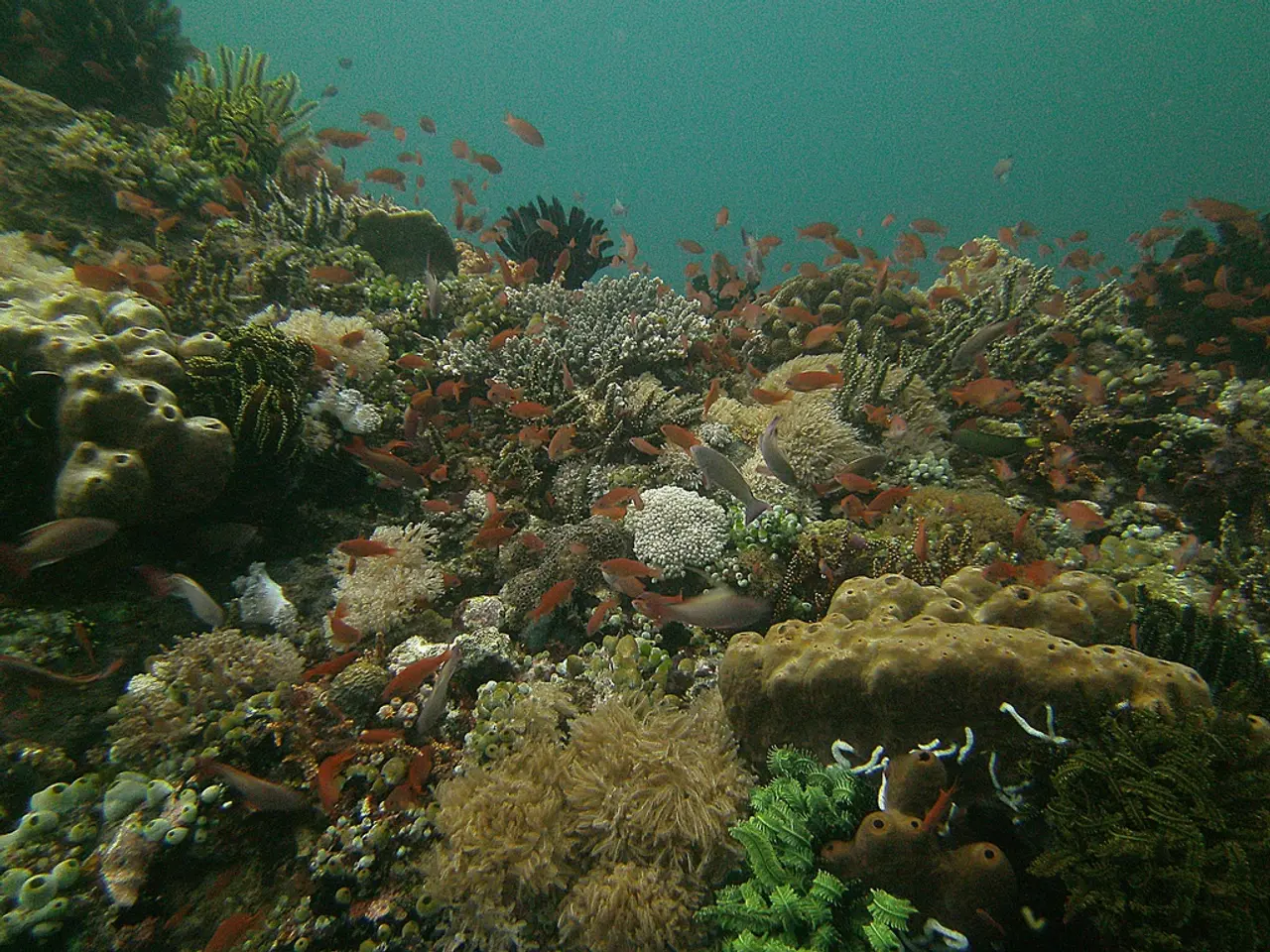Australia's Charismatic Creatures Conserved Through Community Science via SeadragonSearch
The SeadragonSearch project is an innovative citizen science initiative that aims to advance the understanding and conservation of weedy seadragons. This project, a collaboration between the Western Australian Museum (Perth) and the University of California San Diego, utilizes advanced machine learning technology to analyze underwater photos of seadragons[1][3].
At the heart of SeadragonSearch is the participation of divers and underwater photographers, who contribute images that are transformed into crucial data for research[3]. Computer vision and machine learning algorithms are used to analyze the unique patterns on each seadragon's face or body to identify individuals and track their movements[1].
The project supports ongoing scientific studies, including PhD research at the University of Western Australia, led by Chrissy Tustison[2]. SeadragonSearch is also partnering with Wild Me, an Oregon-based software developer, to implement deep learning models in the detection pipeline for seadragons.
The data collected by SeadragonSearch will inform conservation policy for seadragons and their habitats, which are particularly vulnerable to climate change[6]. Seadragons live in shallow algal habitats, making them susceptible to environmental stressors such as harmful algal blooms[4].
Seadragons are marine fishes found only in Australian waters and are part of the same family as seahorses and pipefishes[7]. There are three known species of seadragons: the common, leafy, and ruby seadragon.
The SeadragonSearch website, available at www.seadragonsearch.org, encourages community members to submit photographs of seadragons to help improve data important to seadragon conservation[8]. This initiative not only allows non-invasive monitoring of seadragon populations, helping assess their health and distribution, but also engages the community in conservation efforts, raising awareness, and motivating protective actions.
Moreover, SeadragonSearch aligns with the mission of institutions like Scripps Oceanography, one of the world's most important centers for global earth science research and education[5]. Scripps Oceanography offers unparalleled education and training for the next generation of scientific and environmental leaders. It also operates a fleet of four oceanographic research vessels and is home to Birch Aquarium at Scripps, where renowned seadragon expert Rouse helped develop a permanent exhibition, Seadragons & Seahorses.
In conclusion, SeadragonSearch leverages technology and public participation to improve understanding and protection of weedy seadragons in their natural environments[1][3][2]. The project's 10-year run promises to provide valuable data that can influence environmental management strategies and policy decisions to protect seadragons and their habitats. The Mary "Dewy" White's Lowe Family Foundation is supporting SeadragonSearch in its mission to conserve these unique marine creatures.
[1] SeadragonSearch: www.seadragonsearch.org [2] University of Western Australia: https://www.uwa.edu.au/ [3] Scripps Institution of Oceanography: https://scripps.ucsd.edu/ [4] Birch Aquarium at Scripps: https://www.aquarium.ucsd.edu/ [5] Wild Me: https://www.wildme.org/ [6] University of California San Diego: https://www.ucsd.edu/ [7] Birch Aquarium at Scripps: https://www.aquarium.ucsd.edu/animals/seadragons-seahorses/ [8] SeadragonSearch: www.seadragonsearch.org/submit-photos/
- Advancements in oceanographic research, such as the SeadragonSearch project, harness the power of science and technology to further our understanding and promote conservation efforts for species like weedy seadragons.
- The SeadragonSearch project encourages the public's active participation in contributing photographs, converting them into critical data for ongoing scientific research.
- Beyond its impact on marine biology, SeadragonSearch also supports education and self-development by nurturing the next generation of scientific leaders through institutions like Scripps Oceanography.
- By engaging in lifelong learning through conservation initiatives like SeadragonSearch, individuals contribute to the health-and-wellness of our planet and the continued sustainability of valuable ecosystems.
- In home-and-garden pursuits, the knowledge gained from sustainable-living projects, such as safeguarding the environment of weedy seadragons, can inspire similar green practices at home.
- Data and cloud computing play a significant role in the success of projects like SeadragonSearch, as machine learning algorithms analyze photos and generate valuable insights for conservation strategies.
- Artificial Intelligence, a key component of SeadragonSearch's technology, is often used in various fields, from environmental-science to lifestyle applications, demonstrating its broad applicability in our daily lives and beyond.




